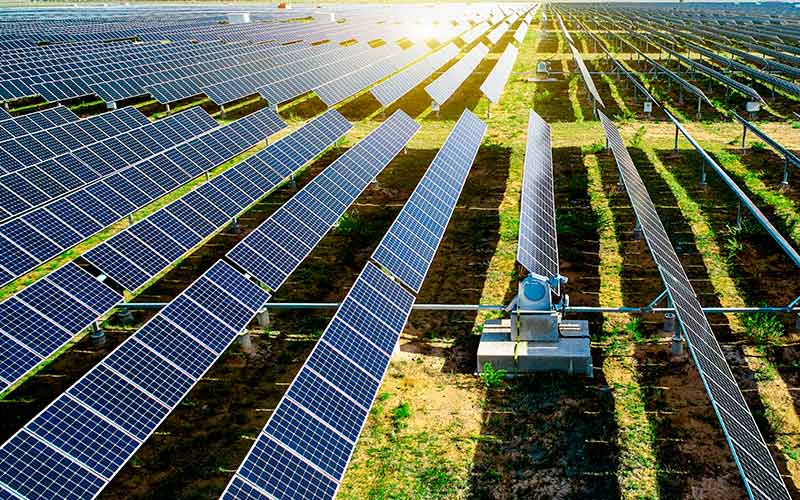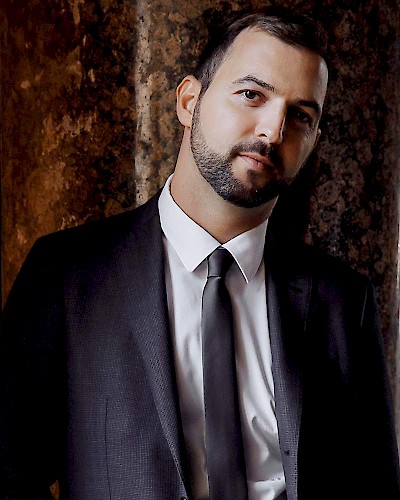
FAIST recognized the potential of the renewable energy market from the very beginning, setting another example of our pioneering spirit. Over the years, we have grown to be a proven, long-term partner to the world’s leading manufacturers of power inverters in the industry, and have further expanded our range to AC/DC EV chargers’ enclosures. For this article, we asked Marco Fusaioli, KAM in the Renewable Energy business of our Industrial division, to tell us a little about this product lines and about the trends he sees in the renewable energies field.
First of all, please present yourself and your role in FAIST to our readers.
My name is Marco Fusaioli, and I cover the role of Key Account Manager at FAIST Industrial. Industrial is a business division of the wider FAIST Group, which counts five different Business Units being part of a worldwide network of companies operating in various market sectors. In my position, I coordinate and manage the Global Customer Team for the effective development of acquired projects belonging to the renewable energy market. I lead the negotiations between the end customer and the company by devising business strategies adopted and agreed with the management, always seeking to achieve the business objectives that also include any new product that helps to expand our current portfolio.
What range does FAIST propose as far as renewable energy products?
The Renewable Energy product line relies on the best technologies that encompass, but are not limited to, the sheet metal fabrication of the broadest portfolio of solar inverters housings - currently on the market ranging from single and three phase string inverters including a range of powers from 1.2 to 175 kW, up to megawatt-sized central inverters, aimed at system integrators and end users who require high-performance solar inverters. This extensive range of solar inverters is suitable for the smallest residential photovoltaic (PV) systems right up to multi megawatt PV power plants. Renewable Energy products portfolio also includes AC/DC EV chargers’ enclosures that can serve all electric vehicles (hybrids and plug-in) on the market. Those are all concerned to a wide range of applications: from car charging with high power fast charging, DC fast charging and AC/DC wall boxes, to connector charging solutions that due their large voltage range, are perfectly suited to charge electric heavy commercial vehicle.
What do you foreseen as the biggest trends for inverters in the future?
The PV inverters have taken on a much wider and strategic role, becoming responsible for many other functions that occur behind the meter other than solar production. This has been possible by pairing energy storage systems with distributed photovoltaic with the capability to act as both generation and load. It represents a unique and disruptive power sector technology, capable of providing a range of important services to customers such as the management of energy storage, communications, monitoring, safety, providing backup power, controlling home appliances, and even charging EVs. The result is synchronized energy usage, which can reduce electricity bills and carbon footprints. In essence, the inverter is becoming the new energy manager and if the goal is having control over energy consumption, managing the load side intelligently will also become key. Intelligently preserved power is often more economic then the power you pay to generate. We expect to see more off-grid inverters offering smart load management capabilities in the form of auxiliary control options, automation/control platform integration, and load scheduling to enable even more value. A new trend will be to combine the functions of a grid-tied inverter and an off-grid inverter into a single package DPV storage system. This new generation of hybrid inverters will have a wider scope of applications compared to the traditional grid-tied inverters and are both useful for homeowners and the utility companies at scale.
More in general, what does the future of renewable energy look like to you?
The trends show that solar (PV, CSP, Heating and Cooling), wind (on-shore and off-shore), hydro and bio-power are more popular with developers and investors. Renewable energy targets have already been introduced into official policies by Governments around the world, which should be translated in the construction of new capacity in wind, solar and other renewable power technologies such as CCS, biogas, hydrogen fuel cells, nuclear and solar thermal over the next decade. A 12TW expansion of generating capacity could entail about $13.3 trillion of new investment between now and 2050, 77% of which should go to renewables. Private sector companies and Governments have joined the pledging to source 100% of their power from renewables and it will lead to buy green electricity by 2030, on top of what they consume now, in order to be on track. This could prompt the construction of new wind and solar plants since those make up for almost 50% of world electricity in 2050. However, the targets and the implied investment are only a fraction of what would be required to put the world on a path to reduce carbon dioxide emissions at scale, sufficiently to limit temperature increases. Consumer energy decisions such as rooftop solar and behind-the-meter batteries will further help to shape an increasingly decentralized grid the world over.
What do you think would greatly contribute to a higher renewable energy penetration?
As we have seen in recent years, environmental topics are not personal matters anymore. People around the world do not just care about global climate change; they want their Country to take action to prevent natural disasters caused by global warming. Governments will need to strengthen their ambitions not just on renewable power, but also on the decarbonization of transport, buildings and industry. To meet future energy demands efficiently with great attention to environment and natural heritage, energy security and reliability must be improved and alternative energy sources must be investigated aggressively. An effective energy solution should be able to address long-term issues by utilizing alternative and renewable energy sources. Of the many available renewable sources of energy, solar energy is clearly one of the promising options as it is extensively available. Solar power, especially as it reaches more competitive levels with other energy sources in terms of cost, may serve to sustain the lives of millions of underprivileged people in developing Countries. Furthermore, solar energy devices can benefit the environment and economy between different Nations, in particular between the least developed Countries and other developing ones.




